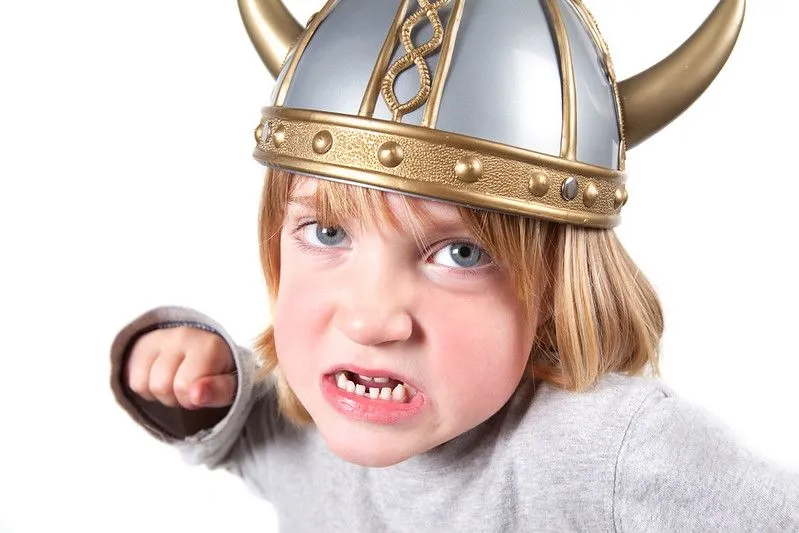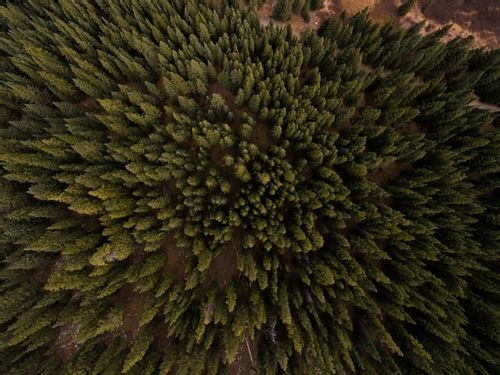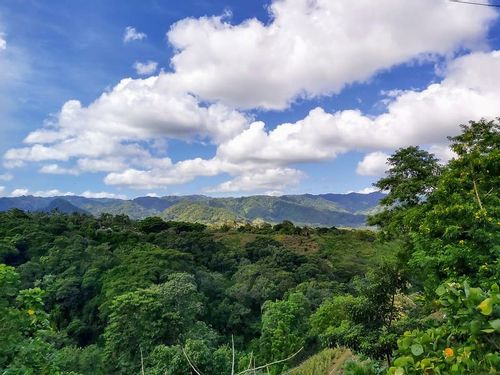FOR ALL AGES
History is an endlessly fascinating subject for children (and adults!), but we can’t always get out to heritage sites or museums to explore the past. Instead, try these craft, cooking and creative projects to bring history to life. In this first article of a two-part series, we look at a few of the most distinctive cultures from prehistoric times up to the conquest of the Americas.
Before we learned to farm and build cities, humans lived in small hunter-gatherer groups, often in caves or small dwellings. The period is often called prehistory, because it predates written language and record keeping. Even so, this long age accounts for more than 99% of all human existence. Almost all of your ancestors lived in a world where stone tools and fire were the most advanced technology -- a fact we often forget!
As the least technologically advanced period, it is also the easiest to recreate at home. Simply get a blanket and drape it over a couple of dining chairs and you have a makeshift cave. Of course, you can aim for something more ambitious if you have the space -- an outdoor cave would be even more effective, especially if you can position it close to a wall for the following activity.
Cave dwellers made the earliest known art work. Images of animals being hunted, or the outlines of hands painted on to cave walls date back some 40,000 years. Your kids can try to recreate these images while in their ‘cave’, painting vertically onto a piece of card or chalking onto a wall.
Dining like a cave child isn’t too tough, so long as you’re not vegetarian. Barbecued beef wouldn’t be so far from the auroch meat our paleolithic ancestors seemed to favour. Fish was another important staple. Probably easier to eat in your tent-cave would be a selection of nuts and berries. Before farming, humans consumed whatever they could find growing on the trees.
Towards the very end of prehistory, humans started forming structures like barrows and henges -- most notably Stonehenge. You can make your own henge in your lounge using any oblong objects, such as books, cereal packets or dominos (for a mini-henge). You could even try to recreate the amazing Lego Stonehenge shown here.
The ancient Egyptians continue to beguile, with their gargantuan pyramids, distinct culture and hieroglyphic writing. Their world is very alien to us today, but we can still get a glimpse by learning through play. One easy game is to try to mummify a doll or action figure by wrapping it in bandages. While your child explores the best way to do this, you could explain why the Egyptians mummified their royal dead, how the procedure worked (including the embalming and organ extraction, which is probably best avoided with dolls!), and wider Egyptian beliefs.
Once mummified, the doll is ready to be interred inside a pyramid. If you’re lucky enough to have a tent and a garden, you may be able to create a pyramidal structure with some creative rearrangement of the tent poles. Alternatively, you could cut four regular triangles from cardboard boxes and bring them together over a square base. We find that Duplo is also excellent for building smaller pyramids, so long as you’ve got enough blocks. Another way to explore Egyptian architecture is to forget about model making and instead focus on what’s inside the pyramid. Show your kids plans of the Giza pyramids, then get them to draw up their own plans -- complete with hidden chambers and secret passages.
Egyptian face masks are also fun to make. Simply buy or construct a basic mask shape strung with elastic, then print out and colour in this image of Tutenkhamun’s famous mask. You could also explore the ancient Egyptian gods -- such as wolf-headed Anubis or falcon-headed Horus -- by making masks (then acting in them).
“What did the Romans ever do for us?” You can find out by getting hands-on with their greatest achievements. Their ancient empire was arguably the most influential in history, spreading ideas and technology to many disparate corners of Europe, Africa and Asia. These very words are typed in the Roman alphabet. Here are just six ideas for bringing the Romans into your home:
Build An Aqueduct: The Romans created impressive aqueducts to bring water into their cities. You could set older kids a challenge of seeing how far they can get water to flow, by using whatever materials they have to hand. Old offcuts of piping, polystyrene, even plastic bags can be shaped to carry water. It’s a real test of ingenuity.
Lay On A Roman Banquet: The Romans liked their food, and even pioneered the first burgers. You can explore -- and make -- the different types of cuisine, including honey cookies and tiger nut sweets, in this article of Roman recipes.
Construct A Roman Helmet: The Romans provide ample inspiration for dressing up, what with their togas, laurel crowns and centurion armour. The crowning glory was the military helmet which, with a bit of cardboard and some coloured feathers, you can easily make at home.
Roman Numerals: The Roman numbering system can be very appealing to kids. It feels like a secret code for something they already know, and is pretty easy to learn. You could set them a challenge of making a clock face using Roman numerals (though, of course, the Romans didn’t themselves have clocks). Or you could play word games, like seeing how many celebrity initials you can make from the seven standard letters (I, V, X, L, C, D and M) -- for example, CL could be Christopher Lee, whose initials are 150 in Roman numerals.
Make A Roman Mosaic: Examples of beautiful Roman mosaics have survived all over Europe (and beyond), and many local museums will have one on display. You can easily make your own at home by cutting up magazine images into small diamonds (or other shapes), sorting them by colour, then tesselating them onto a surface.
Fancy A Bit Of Colouring? Younger children might enjoy colouring in this image of a Roman soldier.
The Anglo-Saxon era (roughly 410 to 1066CE) is of huge importance to British history. This is the period between the withdrawal of the Romans and the arrival of the Normans, sometimes unfairly known as the Dark Ages. It is the age that gave England its name (from land of the Angles), the core of its language, and many of the country’s town and village names. This fascinating period was recently in the spotlight again, thanks to the hugely popular Netflix film The Dig, which chronicled the excavation of the Sutton Hoo burial site.
We’ve already put together a guide on how to explore this era with children. Activities include crafting an Anglo-Saxon helmet, making an Anglo-Saxon brooch, designing medieval rag dolls, and baking oat cakes (just be careful not to burn them like King Alfred supposedly did). We’ve also written an article on Anglo-Saxon art work, which has further ideas.

Viking culture was at its height during the latter half of the Anglo-Saxon period, but their fearsome reputation spread much farther than Britain and their Scandinavian homeland. Viking longboats reached the Mediterranean and even crossed the Atlantic to Newfoundland, on the edge of North America.
Although Viking culture was as rich as any other at the time, the Nordic people are best known as marauders and plunderers. You can create a pretend longboat in your living room by placing stools or low chairs in a row and using mops or brooms as oars. Alternatively, get together a band of toys and send them on a raiding mission to another part of the home. Build up brooches from coloured card and foil, or make a buckler shield out of play-doh, and carve intricate patterns onto its surface. Other projects here include how to make a Viking helmet and Viking home.
The Aztecs ruled an area of central Mexico from around 1300 to 1521, before falling foul of European conquest. Of all the Mesoamerican people, the Aztecs seem to hold the strongest grip on popular imagination. Their bold art and striking architecture continue to fascinate.
The first thing to do is give yourselves a flavour of Nahuatl, the Aztec’s language, which survives to this day with around 1.7 million speakers. A good place to start is to look through this list of 101 Nahautl names (with their meanings in Nahuatl), and decide which one will be your Aztec name.
Now we’re ready to build. One of my favourite childhood memories is of my mother taking all the cushions off the sofa for a spring clean. We’d stack them up in the centre of the lounge in a homemade version of what we might now call softplay. If your sofa can be separated in this way, then you can use the cushions to construct an Aztec step pyramid, perhaps aided with a few spare pillows and duvets from elsewhere in the home. If you don’t want to take such liberties with the soft furnishings, then you could instead get the kids to build their pyramids from boxes, or go miniature with Lego or other building blocks.
Aztec art is also fun to recreate, with its intricate lines and bold use of colour. Get the kids to copy designs found on the internet, then cut them out to decorate your lounge. The Aztecs were famous for chocolate, too, of course (albeit a version without milk or sugar). You could reward good educational play with a chocolate egg!
Read The Disclaimer
At Kidadl we pride ourselves on offering families original ideas to make the most of time spent together at home or out and about, wherever you are in the world. We strive to recommend the very best things that are suggested by our community and are things we would do ourselves - our aim is to be the trusted friend to parents.
We try our very best, but cannot guarantee perfection. We will always aim to give you accurate information at the date of publication - however, information does change, so it’s important you do your own research, double-check and make the decision that is right for your family.
Kidadl provides inspiration to entertain and educate your children. We recognise that not all activities and ideas are appropriate and suitable for all children and families or in all circumstances. Our recommended activities are based on age but these are a guide. We recommend that these ideas are used as inspiration, that ideas are undertaken with appropriate adult supervision, and that each adult uses their own discretion and knowledge of their children to consider the safety and suitability.
Kidadl cannot accept liability for the execution of these ideas, and parental supervision is advised at all times, as safety is paramount. Anyone using the information provided by Kidadl does so at their own risk and we can not accept liability if things go wrong.
Kidadl is independent and to make our service free to you the reader we are supported by advertising.
We hope you love our recommendations for products and services! What we suggest is selected independently by the Kidadl team. If you purchase using the buy now button we may earn a small commission. This does not influence our choices. Please note: prices are correct and items are available at the time the article was published.
Kidadl has a number of affiliate partners that we work with including Amazon. Please note that Kidadl is a participant in the Amazon Services LLC Associates Program, an affiliate advertising program designed to provide a means for sites to earn advertising fees by advertising and linking to amazon.
We also link to other websites, but are not responsible for their content.
Was this article helpful?



Browse Category



We’ll send you tons of inspiration to help you find a hidden gem in your local area or plan a big day out.



Check your inbox for your latest news from us. You have subscribed to:
Remember that you can always manage your preferences or unsubscribe through the link at the foot of each newsletter.